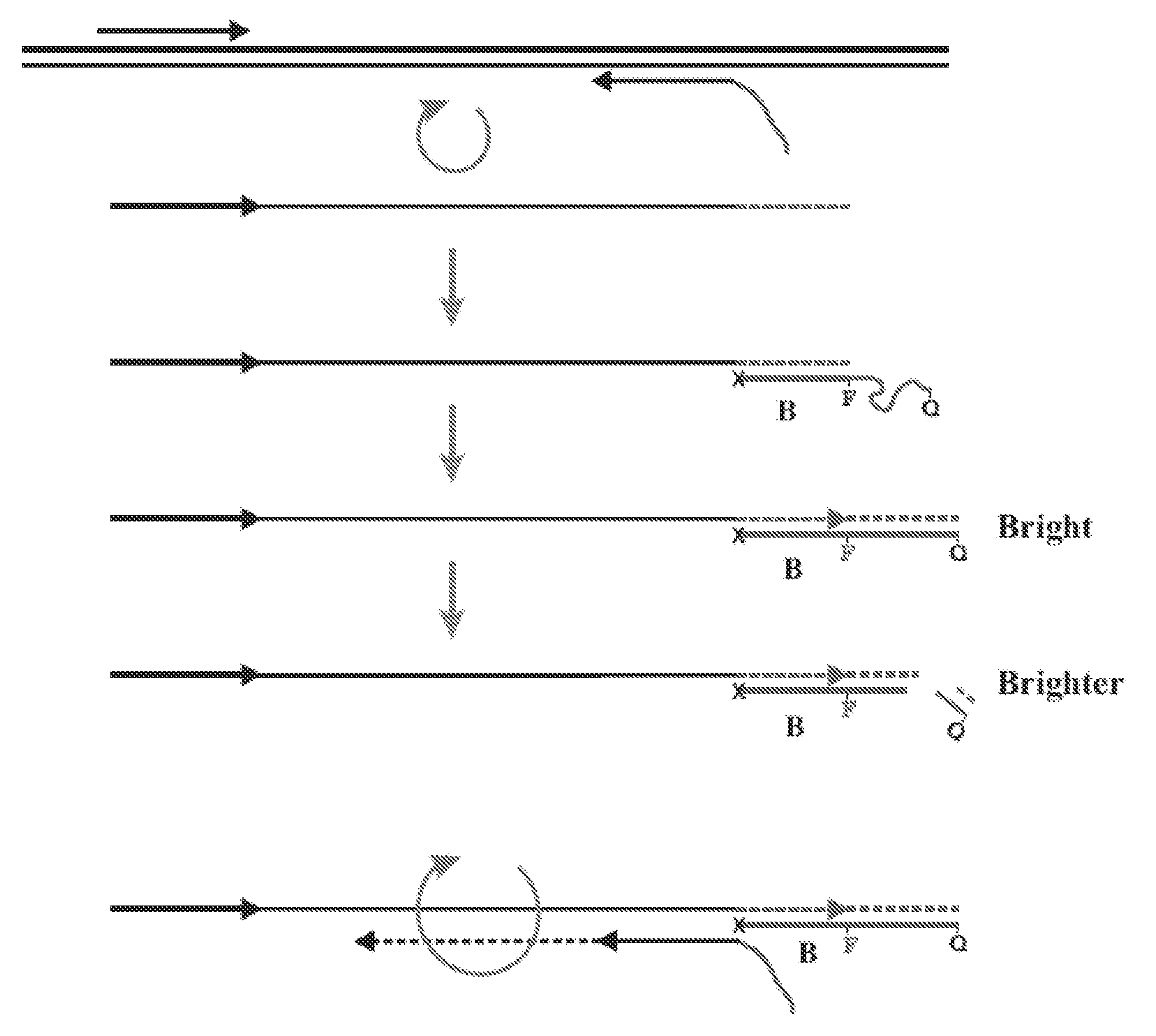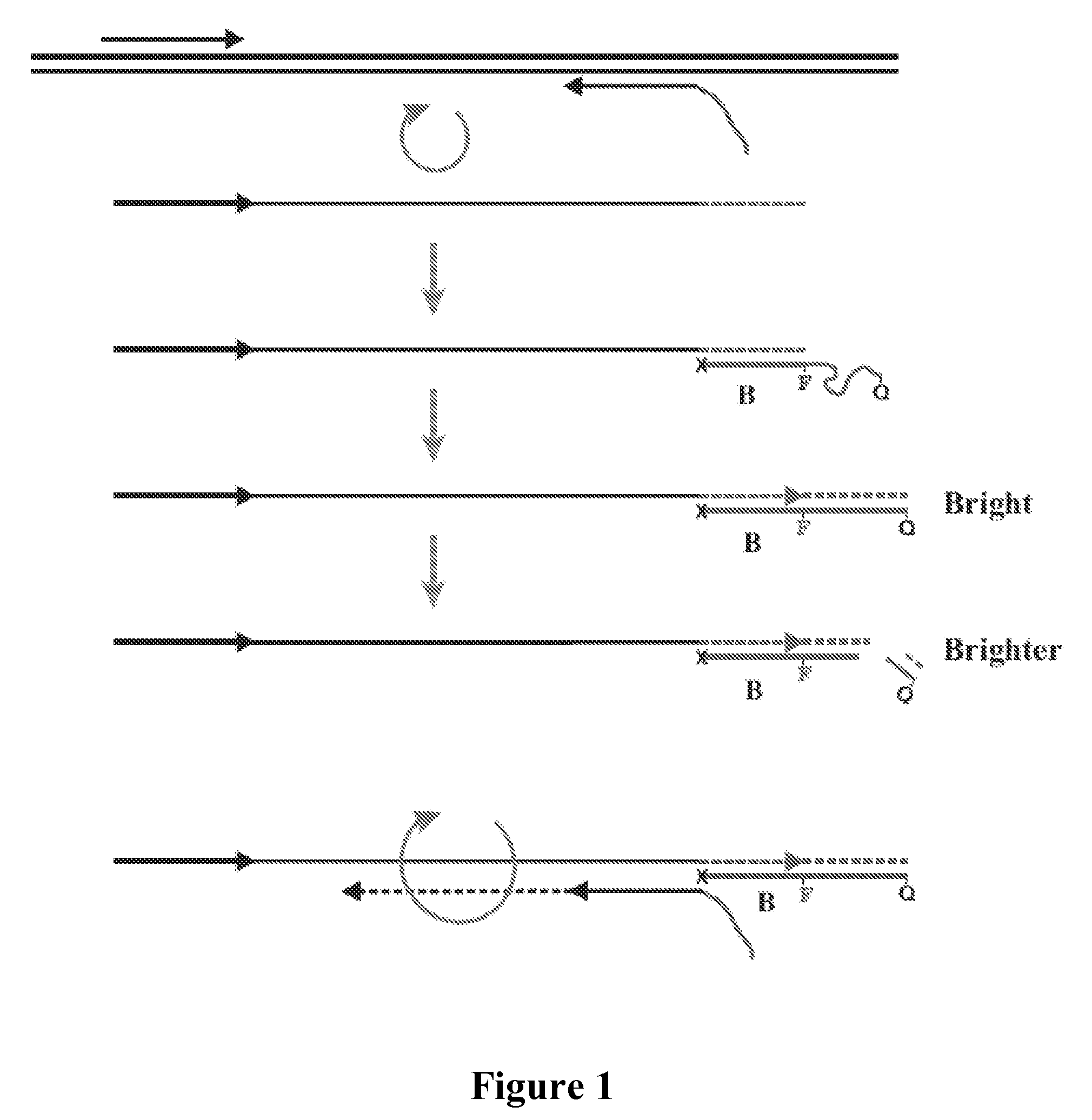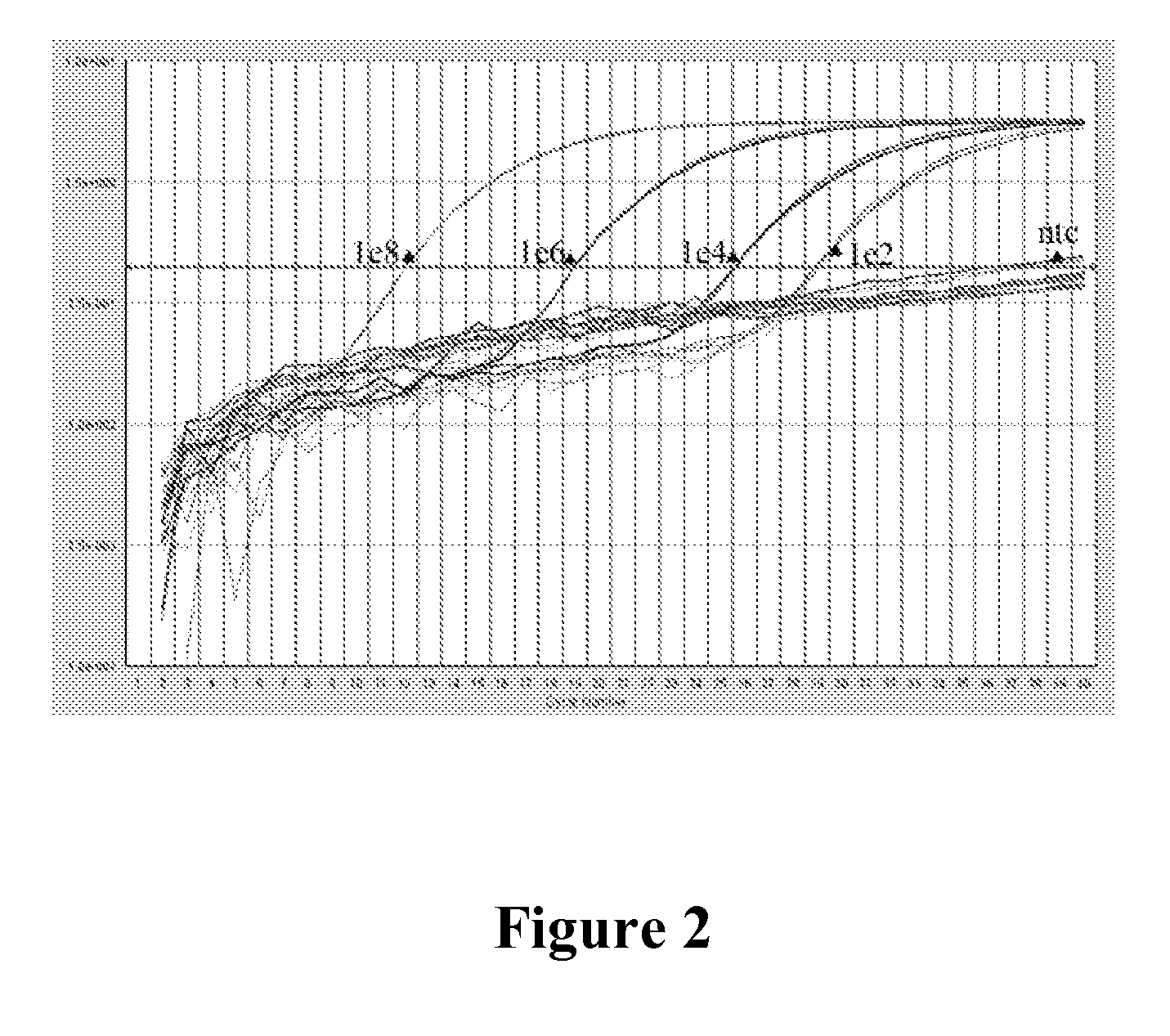Dual Function Primers for Amplifying DNA and Methods of Use
a technology of dna and primers, applied in the field of nucleic amplification and probing, can solve the problems of limited use of “real-time” pcr methods, difficult chemically synthesized structures, and limited probe sequences
- Summary
- Abstract
- Description
- Claims
- Application Information
AI Technical Summary
Benefits of technology
Problems solved by technology
Method used
Image
Examples
example 1
[0042]This example demonstrates that fluorescence-quenched primer / probes can be used to amplify target DNA and give a “real-time” fluorescent signal corresponding to the quantity of amplified target DNA.
[0043]The following oligonucleotides were prepared for this example:
SEQ.IDNO.SequenceNotes1CCAGCCGTAGTCGGTAGTAATCTATCAAtargetGTTCTCATCGAAGCGGATAGGCGAGCG2CCAGCCGTAGTCGGTAGTPCR primer“for”3CGCTCGCCTATCCGCTTCPCR primer“rev”4AQ-CCGTTCTCGAGTTtCGCTCGCCTATFQ probe-CCGCTTCprimer (rev)
[0044]SEQ ID NO: 1 served as a target for amplification. SEQ ID NOS: 2, 3 and 4 were used to amplify the target. SEQ ID NO: 4 had the same priming sequence as SEQ ID NO: 3 and also contained an additional nucleotide sequence on its 5′-end. In SEQ ID NO: 4 the additional nucleotide sequence contained a fluorophore and quencher but the structure did not have a sequence that would lead to hairpin loop formation. The fluorescein modified dT base is denoted t. The fluorophore was fluorescein and was added to the olig...
example 2
[0053]This demonstrates one method for optimizing the distance between a quencher and fluorophore so that a maximum signal to noise ratio is obtained in primer / probes. The same optimization results will apply to FQT template probes.
[0054]The fluorescence of oligonucleotide primer / probes was determined for an oligonucleotide primer / probe in three distinct physical states, namely, single-stranded, double-stranded, and after cleavage at a point between the reporter and quencher. For oligonucleotide cleavage the cleavage was carried out in two ways, first single stranded primer / probes were digested with a mixture of Micrococcal Nuclease and DNase I. Fluorescence was measured in a Tecan plate fluorometer or in a PTI cuvette fluorometer according to manufacturer's instructions.
[0055]The following oligonucleotides were studied in this example:
Fluorophore / SEQ.QuencherIDSeparationNO.Sequence(bases)5AQ-CCGTTtCGCTCGCCTATCCGCTTC66AQ-CCGTTCTtCGCTCGCCTATCCGCT8TC7AQ-CCGTTCTCGtCGCTCGCCTATCCG10CTTC8...
example 3
[0064]This example shows that primer / probes can be prepared with the fluorophore TAMRA. The following oligonucleotides were prepared using the same methods as described in Example 2 with the exception that the fluorophore, TAMRA-dT, was substituted for Fluorescein-dT.
SEQ.Fluorophore / IDQuencherNO.SequenceSeparation13AQ-CCGTTCTCGiCGCTCGCCTATCCGCTTC1014AQ-CCGTTCTCGAGGTiCGCTCGCCTATCCG14CTTC15AQ-CCGTTCTCGAGGTTTTTiCGCTCGCCTA18TCCGCTTC
[0065]As in Example 2, the fluorescence of the oligonucleotide primer / probes was determined for an oligonucleotide primer / probe in three distinct physical states, namely, single-stranded, double-stranded, and after cleavage of the oligonucleotide between the reporter and quencher. For oligonucleotide cleavage the cleavage was carried out through digestion with a mixture of Micrococcal Nuclease and DNase I. Fluorescence was measured in a Tecan plate fluorometer or in a PTI cuvette fluorometer according to manufacturer's instructions. The results are shown in F...
PUM
| Property | Measurement | Unit |
|---|---|---|
| pH | aaaaa | aaaaa |
| volume | aaaaa | aaaaa |
| pH | aaaaa | aaaaa |
Abstract
Description
Claims
Application Information
 Login to View More
Login to View More - R&D
- Intellectual Property
- Life Sciences
- Materials
- Tech Scout
- Unparalleled Data Quality
- Higher Quality Content
- 60% Fewer Hallucinations
Browse by: Latest US Patents, China's latest patents, Technical Efficacy Thesaurus, Application Domain, Technology Topic, Popular Technical Reports.
© 2025 PatSnap. All rights reserved.Legal|Privacy policy|Modern Slavery Act Transparency Statement|Sitemap|About US| Contact US: help@patsnap.com



